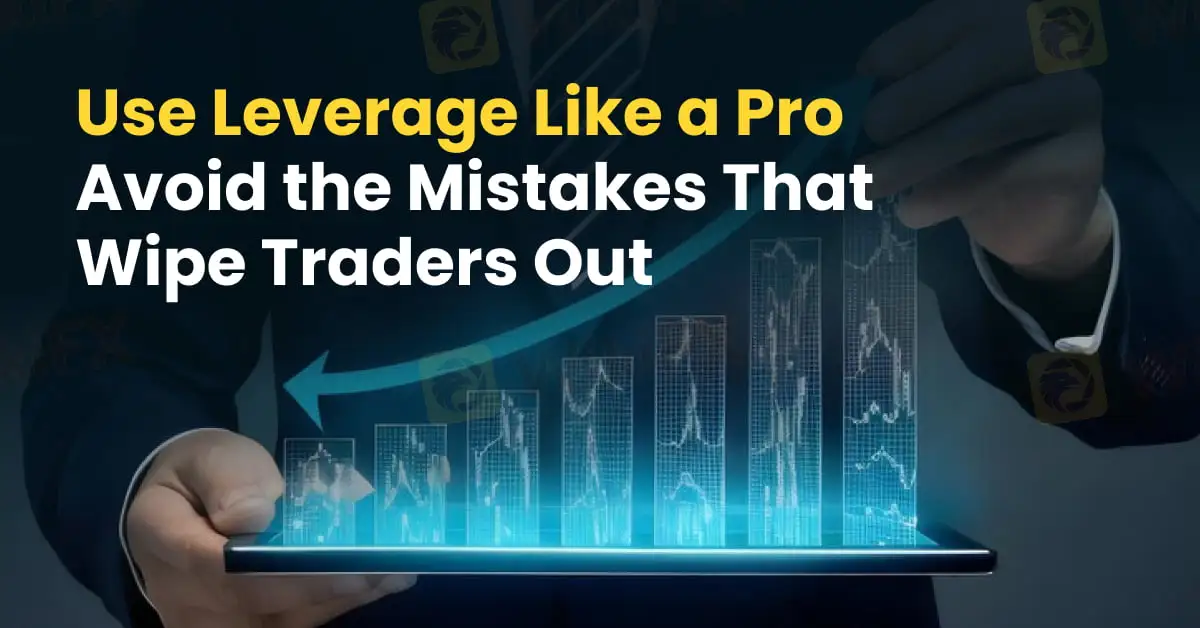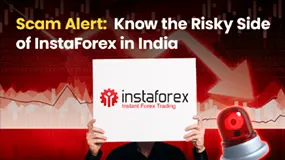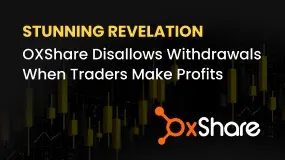简体中文
繁體中文
English
Pусский
日本語
ภาษาไทย
Tiếng Việt
Bahasa Indonesia
Español
हिन्दी
Filippiiniläinen
Français
Deutsch
Português
Türkçe
한국어
العربية
Use Leverage Like a Pro | Avoid the Mistakes That Wipe Traders Out
Abstract:In the high-stakes world of financial trading, leverage is a potent instrument that enables traders to punch well above their financial weight. By allowing market participants to control larger positions with a relatively small outlay of capital, leverage opens the door to potentially outsized returns. But it is not without peril as amplified gains also come with amplified losses, and understanding how leverage works is crucial for anyone stepping into leveraged markets.

In the high-stakes world of financial trading, leverage is a potent instrument that enables traders to punch well above their financial weight. By allowing market participants to control larger positions with a relatively small outlay of capital, leverage opens the door to potentially outsized returns. But it is not without peril as amplified gains also come with amplified losses, and understanding how leverage works is crucial for anyone stepping into leveraged markets.

At its core, leverage refers to borrowing funds, typically from a broker, to increase the size of a trading position. It's commonly expressed as a ratio, such as 10:1, which means for every $1 of personal capital, the trader controls $10 in the market. This ability to command larger sums with minimal upfront investment enhances capital efficiency but simultaneously increases financial exposure.
Leverage finds broad application across asset classes. In the forex market, its not unusual to see leverage ratios as high as 50:1, particularly in jurisdictions with looser regulatory environments. This allows a trader with $1,000 to control $50,000 in currency exposure. In contrast, shares CFDs might offer 2:1 leverage, while commodity contracts, like crude oil or gold, also frequently involve high leverage levels.

Used wisely, leverage can be a powerful ally. A modest price move in a leveraged position can result in substantial profit. For instance, a 1% gain in an asset value translates into a 10% gain on capital at a 10:1 leverage ratio. This is particularly appealing to short-term traders seeking quick returns on limited capital.
However, the same mechanics apply in reverse. That same 1% move against the trader can equate to a 10% capital loss. Add in market volatility, and losses can quickly spiral. If the value of the position falls too far, brokers may issue margin calls, which are demands for additional funds to keep the position open or close the trade altogether, locking in losses.
Mitigating these risks demands a disciplined approach. Sound risk management strategies are vital, such as using stop-loss orders, diversifying across asset classes, and actively monitoring positions. Traders must also educate themselves on how leverage interacts with market conditions and price swings.
Its equally important to understand that leverage limits and margin requirements vary depending on jurisdiction. Regulators like the European Securities and Markets Authority (ESMA) or the U.S. Commodity Futures Trading Commission (CFTC) impose strict leverage caps to protect retail investors. These safeguards reflect just how risky unbridled leverage can be.
Leverage is not inherently good or bad. Its a neutral tool that magnifies outcomes. For the savvy, well-prepared trader, it offers a way to optimise returns and utilise capital efficiently. For the unwary or overconfident, it can result in swift and devastating losses. Knowing when and how to deploy leverage is one of the most important decisions a trader can make. In the end, success with leverage hinges not on bravado, but on strategy, discipline, and a clear-eyed view of risk.

Disclaimer:
The views in this article only represent the author's personal views, and do not constitute investment advice on this platform. This platform does not guarantee the accuracy, completeness and timeliness of the information in the article, and will not be liable for any loss caused by the use of or reliance on the information in the article.
Read more

Scam Alert: Know the Risky Side of InstaForex in India
you should always Scam Alert in forex market. If something seems too good to be true, it often hides red flags behind it. Therefore, We reviewed InstaForex and reveal hidden risks associated with it. Whether you are an Indian trader, a potential user, or an existing client, it is crucial to understand the risks associated with InstaForex .

Going to Invest in FXCL? Move Back to Avoid Scams & Losses
Are FXCL officials calling you to make you a customer by promising a magical profit number? Stop! These officials follow this route to onboard customers and make them deposit at regular intervals. However, when you wish to withdraw, the officials will deny your request. This is nothing but a strong indicator of a scam forex broker. In this article, we will expose the wrongdoings of this Botswana-based broker.

Stunning Revelation: OXShare Disallows Withdrawals When Traders Make Profits
The revelation that OXShare disallows withdrawals to traders when they make profits is stunning but true. Many traders have complained about it on forex broker review platforms, but to no avail. They may receive assurances, but company officials do not live up to their promises. What’s more, these officials manipulate trades, forge vital details, and eventually scam traders who put their hard-earned capital on it. In this article, we will expose OxShare with proof. Read on to check them.

WikiFX Broker Assessment Series | Windsor Brokers: Is It Trustworthy?
In this article, we will conduct a comprehensive examination of Windsor Brokers, delving into its key features, fees, safety measures, deposit and withdrawal options, trading platform, and customer service. WikiFX endeavours to provide you with the essential information required to make an informed decision about utilizing this platform.
WikiFX Broker
Latest News
Join WikiFX’s Agent Growth Event | Turn Your Success into a Global Achievement
Forex Trends Explained for Your Successful Trading Experience
Do Kwon Faces 130-Year Prison Sentence After Guilty Plea in $40B Crypto Collapse
Best 5 Low-Spread FX Brokers in India 2025
Major Pairs in Forex: Top Traded Currency Insights
What is ECN in Trading? A Simple Guide
SEC Settles California Trader with Over $234,000 Spoofing Scheme
What Is Forex Trading Fee? A Beginner’s Guide
Understanding UAE’s Financial Market Regulation: SCA and DFSA
Scam Alert: Know the Risky Side of InstaForex in India
Currency Calculator


